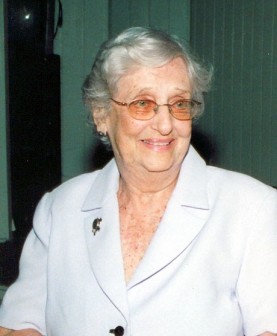TIME Magazine has named the late President Janet Jagan as one of history’s 16 most rebellious women.
The Chicago, US-born Mrs Jagan served as President of Guyana from 1997 to 1999 when she retired due to ill-health and was succeeded by current President Bharrat Jagdeo

Mrs Jagan died on March 28, 2009 at the age of 88. Prior to her ascension to the presidency Mrs Jagan had scored many firsts including being the first woman Prime Minister of the country. She also held various ministerial portfolios.
Although she was born in Chicago, Illinois, in the US, she was a tireless campaigner for Guyana’s independence alongside her husband, the late President Dr Cheddi Jagan. In opposition during the years of PNC rule, she was also at the forefront of the struggle for free and fair elections. In 1997, she succeeded the late President Dr Jagan in the office of the president ? though not without a great degree of controversy.
In addition to her political activism, Mrs Jagan was a pioneering women’s rights advocate, a journalist and later an author of children’s stories and patron of the arts. She was instrumental in the establishment of the National Art Gallery in Castellani House, and sat on its board. Widely read herself, she lent her presence in support of any number of local book launches.
She was conferred with the Order of Excellence (OE) as well as the Gandhi Gold Medal for peace, democracy and women’s rights. Mrs Jagan was also part of the quartet that founded the Political Affairs Committee (PAC), which was the precursor to the PPP. She remained an active party member, serving on its central and executive committees up to the time of her death. She was also editor of the party’s official organ, Thunder and continued to pen columns for the Weekend Mirror newspaper. Her decades long activism rooted her firmly in the national consciousness, where she was widely known as “Janet” to a wide range of supporters and detractors alike.
TIMES’ citation is as follows:
“For Chicago-born Janet Jagan, the vibrant labor struggles in the mid 20th century of her own country were not enough. After falling in love with Cheddi Jagan , a Guyanese denistry student at Northwestern, Jagan followed her future husband, with Lenin’s writings in hand, to his homeland in 1943. Setting up shop as a dental assistant, she set out on a path that would lead to her becoming Guyana’s first woman president. In 1946, she and her husband formed the People’s Progressive Party which sought to both promote Marxist ideals as well as decolonization from the United Kingdom.
“Strikes in what was then referred to as “British Guyana” by domestic workers in the late 1940’s had been inspired by the Jagans and the movement attracted the ire of British Prime Minister Winston Churchill, who put the Jagans in jail. But Jagan proved to be a political survivor, remaining in the game despite various attempts to politically purge her from leadership posts. An impolitic public relations campaign signing the praises of the Cuban revolution attracted the attention of John Kennedy in the 1960’s, who in turn targeted the country’s labor unions. Relegated to the sidelines after a leftist government flopped in the 1960’s, Jagan took to the pages of Mirror, newspaper and became its editor. By the time she was elected the country’s president in 1997, the country achieved the complete independence from Britain that she had sought and nationalized much of its economy.”
The others on the list are:
Vilma Lucila Espin of Cuba who has been dubbed as the `First Lady of Cuba’s Communist Revolution;
Late Israeli Prime Minister Golda Meir who was the country’s leader during the 1973 Yom Kippur War;
US 1960’s political activist Angela Davis – once on the FBI’s most wanted list and now a professor at the University of California at SantaCruz;
Phoolan Devi – Champion of India’s poor and known as the bandit queen;
Corazon Aquino, late President of the Philippines who led the 1986 people’s power revolution;
Burmese opposition leader Aung San Suu Kyi who spent 15 years under house arrest and was recently released;
Tawakul Karma of Yemen- Chairman of a women journalists group in Yemen and currently engaged in protests against the Yemeni President;
Jiang Quing of China, radical member of the Chinese communist regime in the 50s and the wife of Chairman Mao Zedong. She became the leader of the infamous Gang of Four;
Nadezhda Krupskaya of Russia who set up the League of Struggle for the Emancipation of women in 1895;
Susan B. Anthony, US women rights activist who set up the national women’s suffrage movement;
Emmeline Pankhurst of Britain who was the leader of the women’s suffrage movement;
Harriet Tubman, an escapee from US slavery who fought for women’s suffrage and helped many slaves to escape;
Mary Wollstonecraft of Britain, one of the earliest leading lights in the feminist movement
Joan of Arc, a 15th century French peasant girl who fought against the British and famously in the 1429 lifting of the siege of Orleans. She was burnt at the stake by the British for heresy and witchcraft,
Boudica, 1st Century AD leader of the Isceni tribe in Eastern England who revolted against Roman rule.




